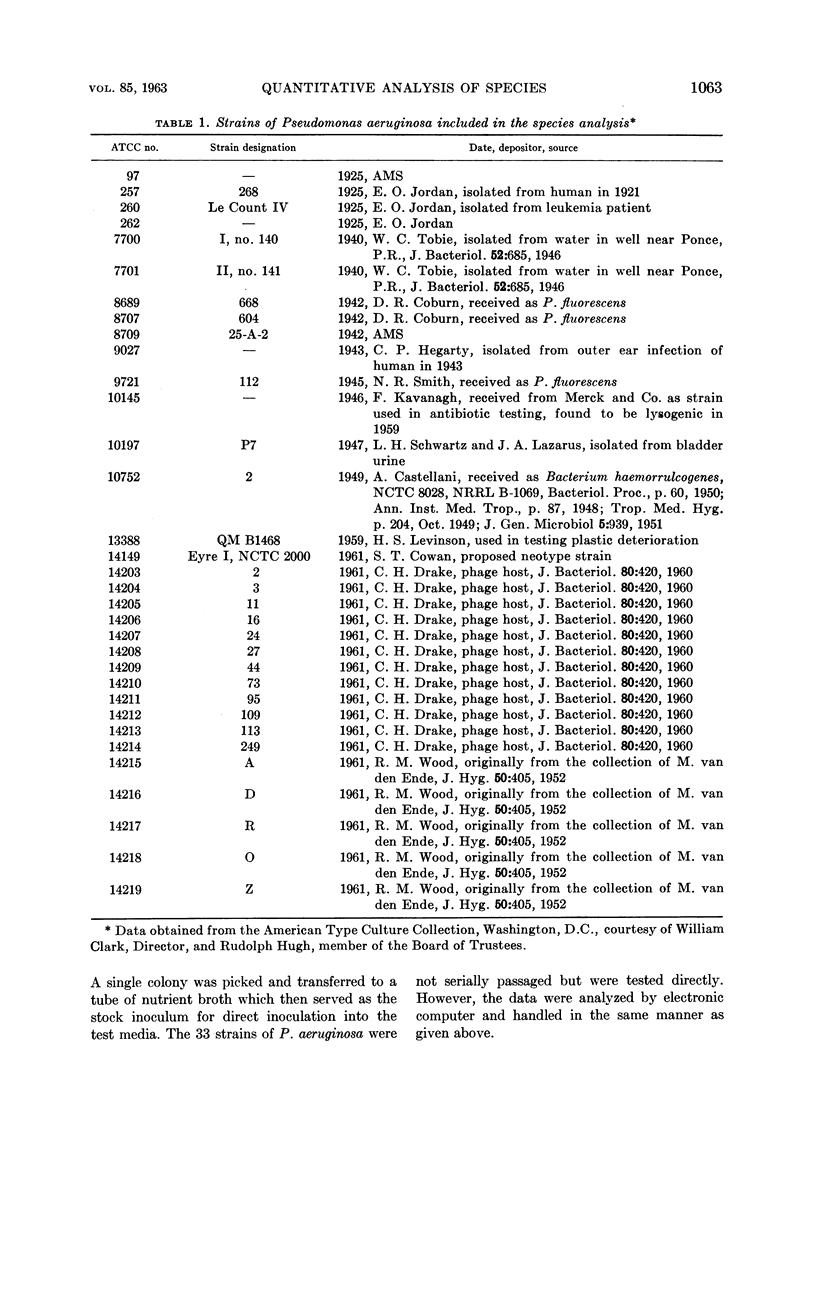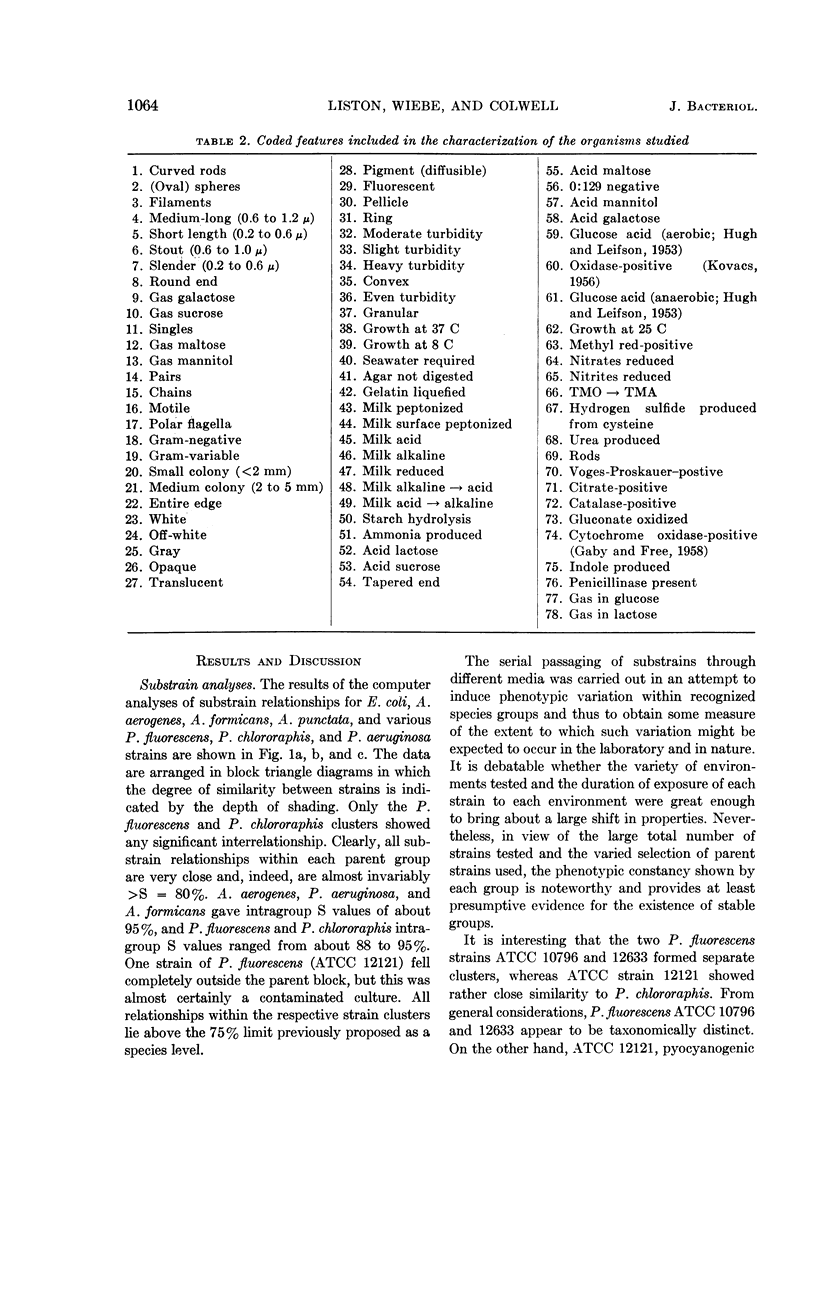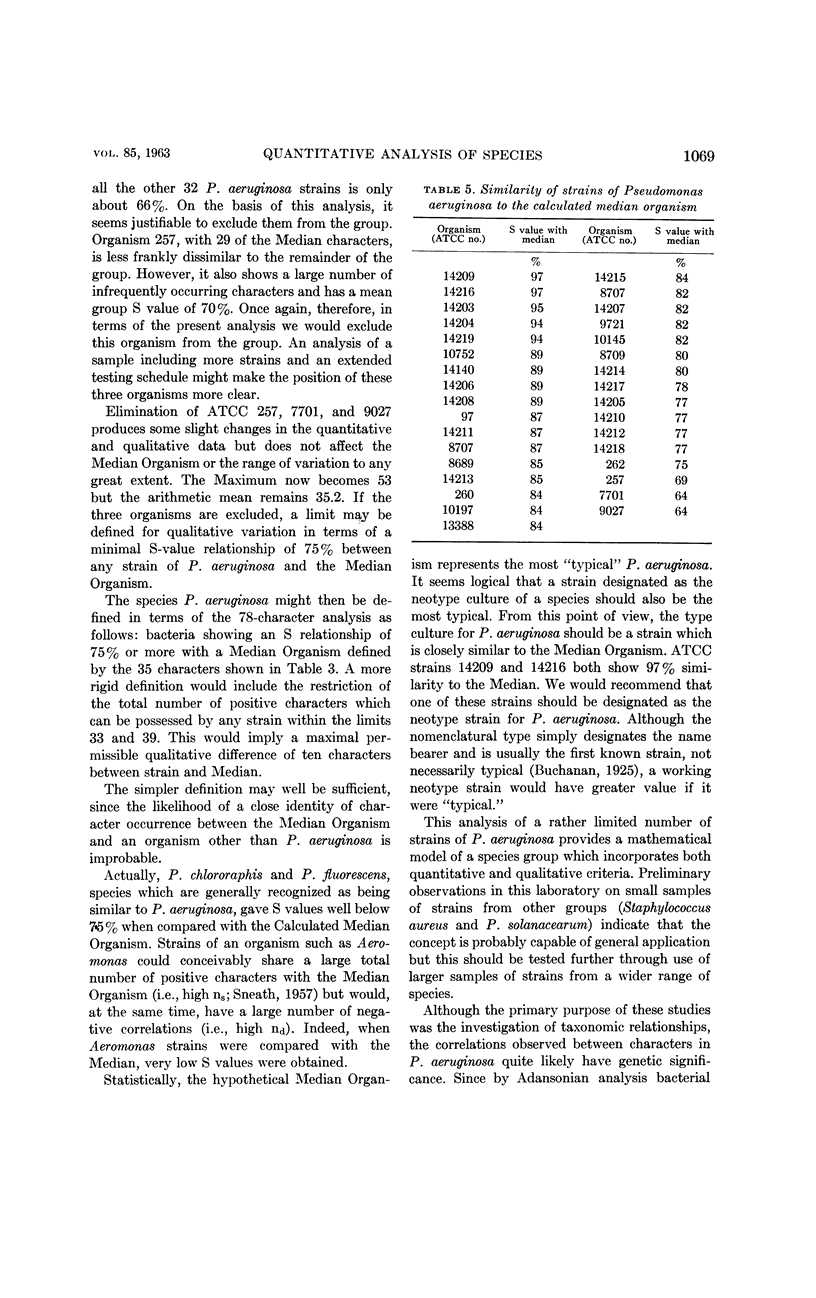Abstract
Liston, J. (University of Washington, Seattle), W. Wiebe, and R. R. Colwell. Quantitative approach to the study of bacterial species. J. Bacteriol. 85:1061–1070. 1963.—The stability of strains of various species of gram-negative, rod-shaped bacteria was investigated by subculturing each strain through ten different media, testing the substrains so produced through a standard series of tests, and analyzing the resulting data by electronic computer. Strain stability was shown to be high [similarity coefficient (S) ≥ 80%], and some evidence was obtained for species stability (S ≥ 75%). The limits of variability for a species were studied by use of Pseudomonas aeruginosa; 33 P. aeruginosa strains (from the American Type Culture Collection) were tested and found to share a high level of similarity. An analysis was made of the distribution of positive characters among the strains, and the group was found to have a mean total of 35 characters (out of a possible 78 which were coded and included in the computer analyses) with a range of 33 to 39 positive characters in individual organisms. The frequency of occurrence of each positive character and the probability of mutual occurrence of pairs of positive characters were calculated. By use of the quantitative and qualitative data so obtained, a hypothetical Median Organism for the P. aeruginosa group was derived. The species may then be defined as consisting of all strains which show an S relationship of 75% or more with the Median Organism. The general applicability of this concept is discussed.
Full text
PDF









Selected References
These references are in PubMed. This may not be the complete list of references from this article.
- COLWELL R. R., LISTON J. Taxonomic analysis with the electronic computer of some Xanthomonas and Pseudomonas species. J Bacteriol. 1961 Dec;82:913–919. doi: 10.1128/jb.82.6.913-919.1961. [DOI] [PMC free article] [PubMed] [Google Scholar]
- COLWELL R. R., LISTON J. Taxonomic relationships among the pseudomonads. J Bacteriol. 1961 Jul;82:1–14. doi: 10.1128/jb.82.1.1-14.1961. [DOI] [PMC free article] [PubMed] [Google Scholar]
- COLWELL R. R., LISTON J. Taxonomy of Xanthomonas and Pseudomonas. Nature. 1961 Aug 5;191:617–619. doi: 10.1038/191617a0. [DOI] [PubMed] [Google Scholar]
- GABY W. L., FREE E. Differential diagnosis of Pseudomonas-like microorganisms in the clinical laboratory. J Bacteriol. 1958 Oct;76(4):442–444. doi: 10.1128/jb.76.4.442-444.1958. [DOI] [PMC free article] [PubMed] [Google Scholar]
- HILL L. R. The Adansonian classification of the staphylococci. J Gen Microbiol. 1959 Apr;20(2):277–283. doi: 10.1099/00221287-20-2-277. [DOI] [PubMed] [Google Scholar]
- HUGH R., LEIFSON E. The taxonomic significance of fermentative versus oxidative metabolism of carbohydrates by various gram negative bacteria. J Bacteriol. 1953 Jul;66(1):24–26. doi: 10.1128/jb.66.1.24-26.1953. [DOI] [PMC free article] [PubMed] [Google Scholar]
- KOVACS N. Identification of Pseudomonas pyocyanea by the oxidase reaction. Nature. 1956 Sep 29;178(4535):703–703. doi: 10.1038/178703a0. [DOI] [PubMed] [Google Scholar]
- SHEWAN J. M., HODGKISS W. A method for the rapid differentiation of certain nonpathogenic, asporogenous bacilli. Nature. 1954 Jan 30;173(4396):208–209. doi: 10.1038/173208b0. [DOI] [PubMed] [Google Scholar]
- SNEATH P. H., SOKAL R. R. Numerical taxonomy. Nature. 1962 Mar 3;193:855–860. doi: 10.1038/193855a0. [DOI] [PubMed] [Google Scholar]
- SNEATH P. H. The application of computers to taxonomy. J Gen Microbiol. 1957 Aug;17(1):201–226. doi: 10.1099/00221287-17-1-201. [DOI] [PubMed] [Google Scholar]
- TALBOT J. M., SNEATH P. H. A taxonomic study of Pasteuralla septica, especially of strains isolated from human sources. J Gen Microbiol. 1960 Feb;22:303–311. doi: 10.1099/00221287-22-1-303. [DOI] [PubMed] [Google Scholar]


